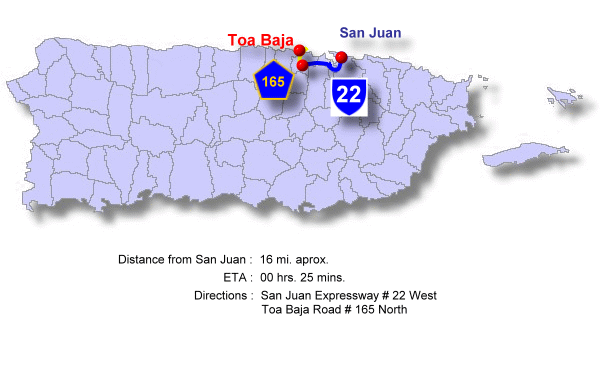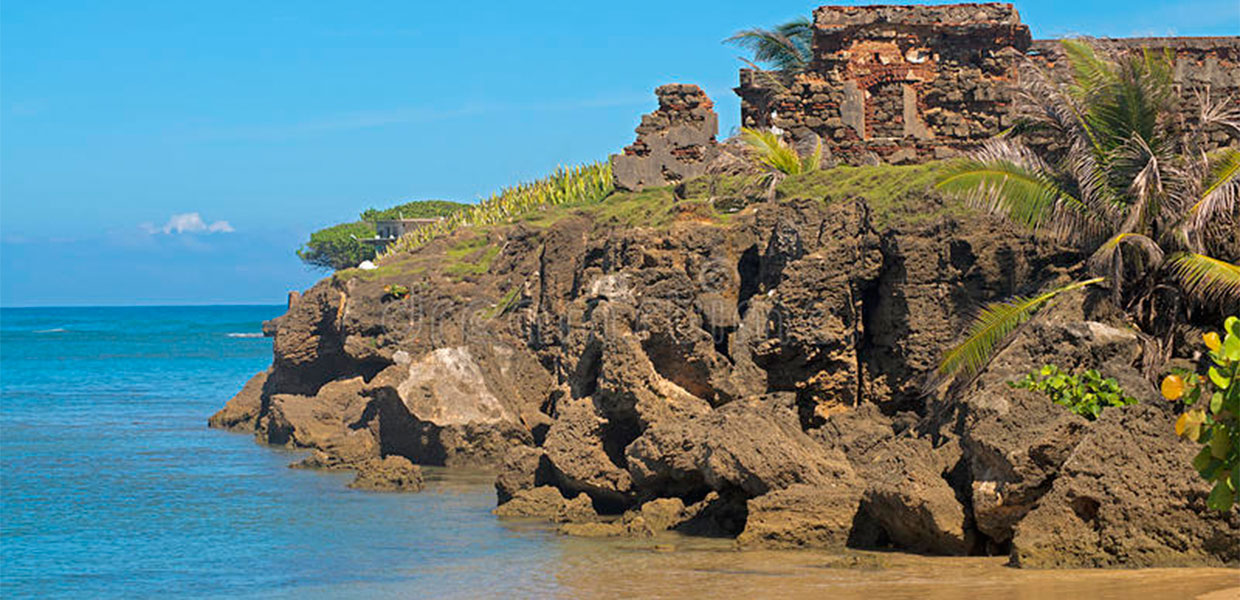
Toa Baja, Puerto Rico
Valleys of the Toa City
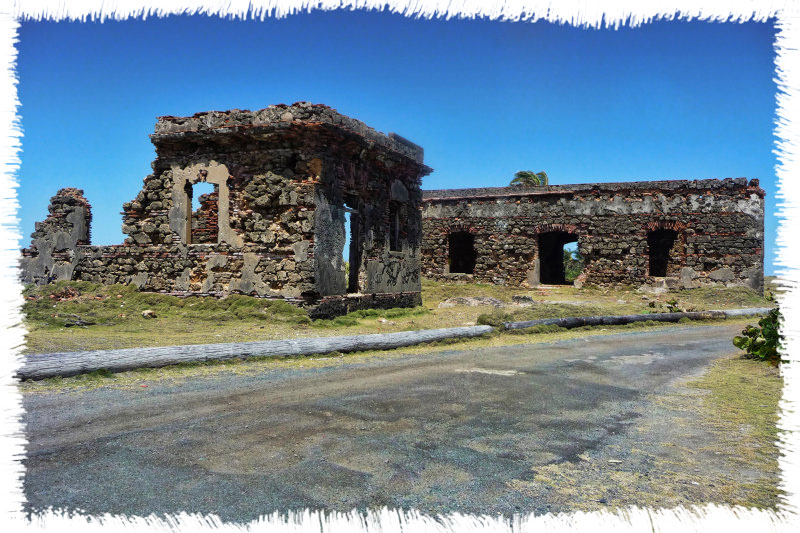
Toa Baja (TO-ah BAH-hah) is affectionately known as the “City of the Toa Valleys”, the “Underwater City”, and the “People of the Plains”. Its patron saint is San Pedro Apóstol.
Located on the northern coast of Puerto Rico, Toa Baja is bordered by the Atlantic Ocean to the north, Dorado to the west, Toa Alta to the south, and Cataño and Bayamón to the east. The municipality covers an area of 62.4 square kilometers (24.0 square miles) and is characterized by fertile plains, wooded hills typical of the karst region, and a rich network of rivers and streams. The La Plata (Toa) River, the longest river in Puerto Rico, runs through the municipality, along with the Cocal Canal and other minor streams, which historically supported agriculture and fishing.
One of the most notable historical sites in Toa Baja is Isla de Cabras (Goat Island), where a leprosarium (for patients of Hansen’s Disease) was constructed at the end of the 19th century. Governor Segundo de la Portilla laid the first stone on December 17, 1876, and the facility was completed in 1883. The ruins remain a testament to the island's historical role in public health.
Historically, Toa Baja’s economy relied on agriculture, including sugarcane, fruits, and dairy farming, and later diversified into manufacturing, producing metal, plastics, concrete, textiles, electronics, and rum. In recent decades, local agriculture has declined, though initiatives in sustainable farming and agroecology are emerging to support local food production.
As of the 2020 Census, Toa Baja had a population of approximately 75,293, with residents known as Toabajeños. The municipality has a rich cultural life, hosting annual festivals such as the Artisans Festival (March), Patron Saint Festival (June), Beach Festival (July), Musical Bands Festival (August), and Christmas Festival (December). These events celebrate the municipality's heritage, music, dance, and cuisine.
Foundation
The foundation of Toa Baja is traditionally dated to 1747, although some historians suggest it may have occurred shortly thereafter. Twenty years later, the settlement was still classified as a small village, known as the Shore of Toa Baja. Along the banks of the Toa River (today the De La Plata River), Juan Ponce de León established the King’s Farm at a site called Santa Elena, which had previously been the yucayeque (village) of Taíno chief Aramaná. The indigenous inhabitants were used for manual labor in the early agricultural operations.
It is believed that Toa Baja was the site of the island’s first experimental agricultural station, where European vegetables were introduced and local crops were improved, marking an important step in the development of Puerto Rico’s colonial agriculture.
The term “Toa” means mother, which is also the indigenous name for the De La Plata River, originating in the mountains of the Cayey region and flowing north to the Atlantic Ocean.
During the 16th century, the fertile lands of Toa Baja attracted numerous settlers due to the richness of its alluvial soils and the production of pre-Columbian fishing corrals in the river. The first European settlers were families from the Canary Islands, including the surnames Marrero, Salgado, and Martínez.
In 1749, a new church dedicated to Our Lady of the Conception and the saints Pedro, Pablo, and Matías was constructed on a hill in front of the town. Shortly afterward, it was relocated to a higher site facing the river, with its back toward Toa Baja, to better protect it from flooding.
In 1902, the Legislative Assembly of Puerto Rico approved the Law for the Consolidation of Certain Municipal Terms, which temporarily dissolved Toa Baja as a municipality, incorporating its wards and civil employees into Bayamón. This decision was reversed in 1905, restoring Toa Baja’s status as an independent municipality with its original wards.
San Juan de la Cruz Fort (Isla de Cabras)
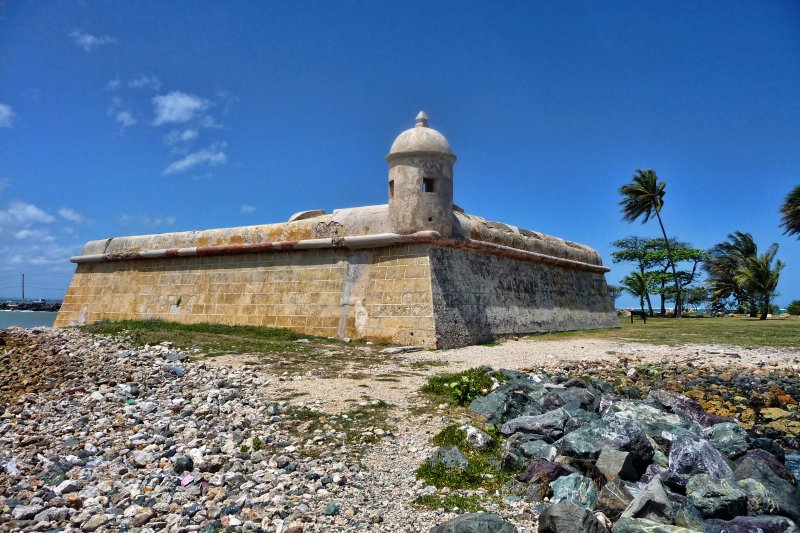
San Juan de la Cruz Fort, located on Isla de Cabras off the northern coast of Toa Baja, was a critical defensive structure during the Spanish colonial period. Built in the late 16th and 17th centuries, the fort was strategically positioned to protect the entrance to San Juan Bay from naval attacks.
In addition to its military significance, Isla de Cabras later became the site of a leprosarium for patients with Hansen’s Disease (leprosy), with construction beginning on December 17, 1876, under Governor Segundo de la Portilla, and completed in 1883. The fort and leprosarium remain important historical landmarks, reflecting both the island’s military and public health history.
Location
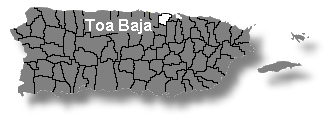 Located in the northern coast, it borders with Dorado and the Atlantic Ocean to the north, south with Toa Alta, west with Dorado and Cataño and east with Bayamón.
Located in the northern coast, it borders with Dorado and the Atlantic Ocean to the north, south with Toa Alta, west with Dorado and Cataño and east with Bayamón.
Area
62.4 sq km / 24.0 sq mi
Population
75,293 (2020 Census)
Population Density
1,207.5 per km² (3,129.1 per mi²)
Demonym
Toabajeños
Toa Baja is also known as:
Ciudad de los Valles del Toa (Valleys of the Toa City)
Ciudad Bajo Aguas (Under Water City)
Los Llaneros (The Valley People)
Toa Baja is situated in the northern coastal plain of Puerto Rico, characterized by fertile alluvial soils and a mix of flatlands and karst hills. The municipality's rivers, including the De La Plata, Cocal, and Hondo, have historically influenced settlement patterns and agricultural development.
The town's central area, known as Toa Baja Pueblo, serves as the administrative and cultural heart of the municipality. Nearby, the planned community of Levittown is one of Puerto Rico's largest suburban developments, with a population of 25,591 as of the 2020 Census
Wards: Toa Baja, Puerto Rico
Toa Baja is composed of six main barrios (wards), each with its own population and unique characteristics:
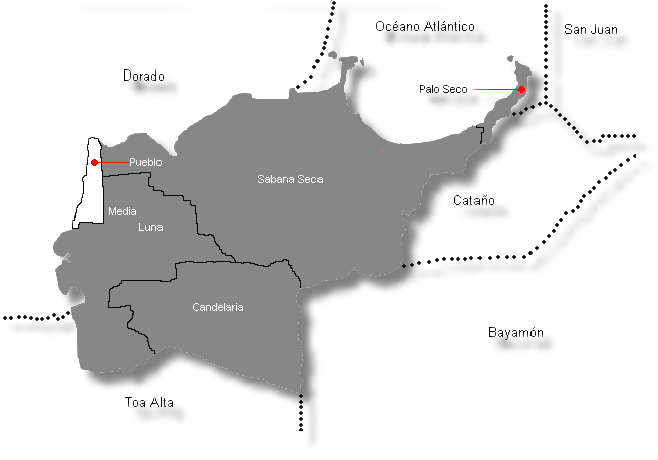
| Census 2020: Population by Wards - Toa Baja |
Population (2020 Census) |
| Candelaria | 23,343 |
| Media Luna | 9,499 |
| Palo Seco | 325 |
| Sabana Seca | 45,047 |
| Toa Baja Town | 488 |
| Levittown | 25,591 |
| Total | 104,293 |
Sources: U.S. Census Bureau 2020; Census Reporter; Wikipedia (Levittown, Toa Baja).
Barrio Descriptions
- Candelaria is one of the largest barrios, with a mix of residential neighborhoods and commercial areas.
- Media Luna is primarily residential, known for its close-knit communities and cultural events.
- Palo Seco is the smallest barrio, historically sparsely populated, maintaining a rural character.
- Sabana Seca is the most populous barrio, featuring dense residential zones and a hub for local commerce.
- Toa Baja Pueblo serves as the central urban area, hosting municipal offices, cultural institutions, and essential services.
- Levittown is a large planned suburban community, one of Puerto Rico’s biggest, with schools, commercial centers, and recreational areas.
Compared to the 2000 Census, when Toa Baja had 94,085 inhabitants, the 2020 Census shows growth to 104,293. Most of this increase occurred in Levittown and Sabana Seca, reflecting suburban development and urban expansion.
Each barrio contributes uniquely to the municipality’s culture, economy, and identity, collectively shaping Toa Baja into a vibrant and historically rich community.
Patron:
San Pedro Apóstol
San Pedro Apóstol Parish
Calle Las Flores 47
Toa Baja, P.R. 00949
Teléfono: 787-794-1327
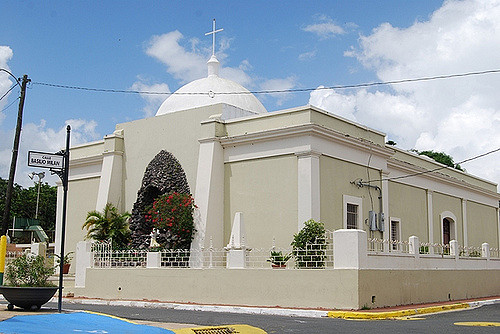
Geography & Topography
Toa Baja is situated in the Northern Coastal Plains and the karst region of Puerto Rico. The landscape features rolling hills, limestone formations, and fertile valleys typical of the island's karst topography, which influences local agriculture and water drainage patterns. Elevations range from 200 to 490 feet (60 to 150 meters) above sea level, with the highest areas located in the southern part of the municipality. The northern region is characterized by mangroves and marshes, while the southern part is classified as typical karst terrain.
Hydrography
The municipality is traversed by several significant waterways:
- Río de la Plata: A major river that flows through the region, providing water resources for agriculture and local communities.
- Río Cocal: Another important river contributing to the area's hydrology.
- Río Hondo: Adds to the complex river system in Toa Baja.
- San Pedro Swamp (Sabana Seca): A notable wetland area that supports diverse ecosystems and plays a role in local water management.
These water bodies are vital for the local economy, particularly in agriculture and fishing.
Economy
Toa Baja's economy is diverse, with key sectors including:
- Manufacturing: The municipality hosts industries producing metal, plastic, concrete, textiles, electrical and electronic machinery, and rum.
- Agriculture: The fertile lands support the cultivation of sugar cane, various fruits, and dairy cattle farming.
- Tourism: Attractions like beaches and historical sites contribute to the local economy.
Despite these sectors, Toa Baja faces economic challenges, including a high poverty rate of approximately 50.83% and a median household income of $22,436.
Infrastructure & Transportation
- Highways: PR-165, PR-167, PR-22 connect Toa Baja with San Juan and surrounding municipalities
- Public Transportation: Buses, taxis, ride-share services
- Maritime Access: Historical access via Atlantic coast for trade and fishing
Education
- Public Schools: Elementary, middle, and high schools across barrios
- Private & Charter Schools: Alternative education options
- Nearby Universities: University of Puerto Rico (Bayamón campus), technical institutes
Health & Public Services
- Hospitals & Clinics: Available in Sabana Seca and Levittown
- Emergency Services: Fire, police, civil defense units
- Public Health Programs: Community initiatives and historical leprosarium on Isla de Cabras
Cultural & Sports Activities
- Sports: Baseball, basketball, recreational leagues
- Cultural Centers: Community music, dance, and art programs
- Libraries & Museums: Municipal library and local historical exhibits
Flag
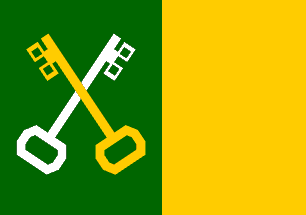 The flag of Toa Baja was designed in 1980, featuring green and gold colors with crossed keys in gold and silver. The green stripe symbolizes the plains of the Toa, while the gold represents the sun that bathes these plains. The crossed keys honor San Pedro Apostle, the town's patron saint, and are depicted in the greater altar of the Parochial Church of Toa Baja.
The flag of Toa Baja was designed in 1980, featuring green and gold colors with crossed keys in gold and silver. The green stripe symbolizes the plains of the Toa, while the gold represents the sun that bathes these plains. The crossed keys honor San Pedro Apostle, the town's patron saint, and are depicted in the greater altar of the Parochial Church of Toa Baja.
Coat of Arms
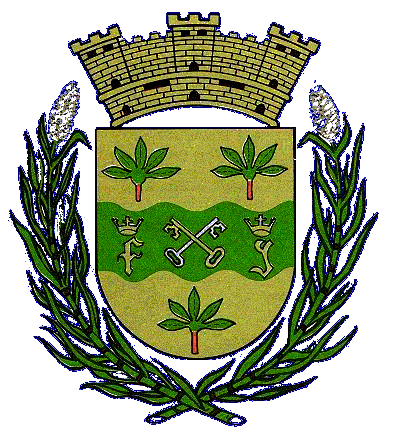 The coat of arms of Toa Baja includes several symbolic elements:
The coat of arms of Toa Baja includes several symbolic elements:
- Wavy Stripe: Represents the Toa River, one of the first mentioned in Puerto Rico's history.
- Crossed Keys: Symbolize San Pedro Apostle, the town's patron saint.
- Letters F and J: Represent King Ferdinand II of Aragon and Queen Juana I of Castile.
- Handfuls of Yucca: Refer to the indigenous crop and the staple food, casabe.
- Crown: Denotes the traditional municipal standard.
- Sugar Cane Stems: Allude to the cultivation and industry that were the main sources of wealth in Toa Baja.
Events
Toa Baja hosts several annual events that celebrate its culture and traditions:
- Artisans Festival – March
- Patron Saint Festival – June
- Beach Festival – July
- Musical Bands Festival – August
- Christmas Festival – December
These festivals feature parades, games, artisans, amusement rides, regional food, and live entertainment. They play a significant role in preserving and promoting the cultural heritage of Toa Baja.
Places To Visit
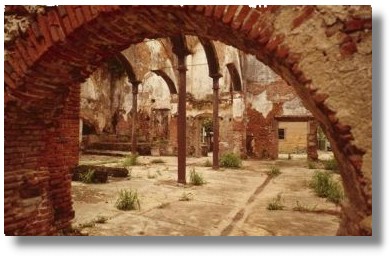
Toa Baja offers various attractions for visitors:
- Cañuelo Fortress: A historic fort located on Isla de Cabras.
- Central Constancia: A former sugar mill with historical significance.
- Isla de Cabras - Goat Island: A small island with beaches and historical sites.
- Hacienda Santa Elena: Ruins of a historic estate
- Hermana Island: A small island near the coast.
- Punta Salinas Public Beach: A popular beach destination.
- San Pedro Apostle Church: A historic church in the town center.
- Palo Seco Thermoelectrical Power Station: An industrial site with historical relevance.
- Nuestra Señora del Carmen Church: A church known for its architectural beauty.
These sites reflect the rich history and natural beauty of Toa Baja, making it a unique destination for tourists.
Distinguished Citizens:
Toa Baja has been home to several notable individuals:
- Virgilio Dávila: A renowned Puerto Rican poet.
- Ernesto Juan Fonfrías: A lawyer, novelist, poet, and essayist.
- Manuel Padilla Dávila: A farmer and poet.
- Teresina Delgado: A poet, orator, and musical composer.
- Luis M. Santiago: A teacher and author of the hymn of Toa Baja.
- Pablo Pantoja Robles: A U.S. armed forces veteran and municipal assembly member.
- Dra. Carmen A. Pantoja: Puerto Rico's first woman astronomer; associate professor of physics and astronomy at the University of Puerto Rico.
These individuals have contributed significantly to the cultural, scientific, and civic life of Toa Baja and Puerto Rico.
Recent Trends
In recent years, Toa Baja has experienced several developments that reflect its evolving character and community initiatives:
- Urban & Suburban Growth: Expansion in Levittown and Sabana Seca continues to drive population growth and new residential developments.
- Infrastructure Improvements: Flood control, stormwater management, and coastal resilience projects have been prioritized.
- Sustainable Agriculture: Agroecology and CSA programs promote local food production.
- Tourism & Heritage Promotion: Historical sites are increasingly featured in cultural tourism.
- Renewable Energy: Solar projects and energy-efficient municipal initiatives support sustainability
- Cultural & Community Programs: Festivals, music, dance, and arts programs foster civic pride.
- Education & Science: Local schools and nearby universities support STEM and cultural programs.
- Environmental Initiatives: Conservation of mangroves, wetlands, and rivers strengthens natural defenses and biodiversity.
These trends highlight Toa Baja’s transformation into a resilient, culturally rich, and environmentally conscious municipality, blending history, modern development, and community engagement.
Toa Baja Public Schools.
Toa Baja District
| Name | Level | Telephone | Address |
| ALTINENCIA VALLE | Elementary | (787) 794-1460 | PO Box 731 |
| AMALIA LÓPEZ DE VILA | Elementary | (787) 784-2035 | PO Box 50449 |
| ANTONIA SÁEZ IRIZARRY | Elementary | (787) 780-5975 | PO Box 2400 Suite 361 |
| CARMEN BARROSO MORALES | Elementary | (787) 795-8885 | PO Box 52032 |
| DELIA DÁVILA DE CABÁN | Elementary | (787) 261-1340 | 5ta Calle Lago Las Curias |
| DR. EFRAÍN SÁNCHEZ HIDALGO | Elementary | (787) 784-5570 | PO Box 2477 |
| ERNESTINA BRACERO | Elementary | (787) 784-5540 | PO Box 233 |
| ERNESTO JUAN FONFRÍAS | Elementary | (787) 780-1750 | Carr. # 2, km 17.7 |
| JOHN F. KENNEDY | Elementary | (787) 784-0370 | PO Box 2477 |
| JOSÉ NEVAREZ LÓPEZ | Elementary | (787) 870-5246 | PO Box 2345 |
| JOSÉ ROBLES OTERO | Elementary | (787) 794-3470 | PO Box 2477 |
| LORENCITA RAMÍREZ DE ARELLÁN | Elementary | (787) 784-4925 | PO Box 52015 |
| LUIS M. SANTIAGO | Elementary | (787) 794-1445 | PO Box 2322 |
| MARÍA J. CORREDOR RIVERA | Elementary | (787) 740-2225 | PO Box 2477 |
| BASILIO MILÁN HERNÁNDEZ | Intermediate | (787) 795-6570 | PO Box 51515 |
| JOSÉ NEVAREZ LANDRÓN | Intermediate | (787) 794-1465 | PO Box 1321 |
| MARÍA LIBERTAD GÓMEZ | Intermediate | (787) 784-0125 | PO Box 2477 |
| MARTÍN GARCÍA GIUSTI | Intermediate | (787) 251-2231 | PO Box 2477 |
| FRANCISCA DÁVILA SEMPRIT | Second Unit | (787) 784-3455 | PO Box 2477 |
| ADOLFINA IRIZARRY | High School | (787) 794-2018 | PO Box 2477 |
| DR. PEDRO ALBIZU CAMPOS | High School | (787) 784-4605 | PO Box 51901 |
| MARÍA TERESA PIÑEIRO | High School | (787) 784-4140 | PO Box 495 |
Hymn:
By Luis M. Santiago
Espléndido Toa Baja, jardín de mis amores,
tú luces por doquiera, tu hermosura sin par.
Son bellas y fragantes tus matizadas flores,
que vierten en el aire su esencia virginal.
Un sol esplendoroso alumbra tu llanura,
risueña, portentosa por su fecundidad;
pues luce eternamente su manto de verdura,
primicias venturosas del clima tropical.
Hermosa tus noches, perenne primavera,
y de tu luna hermosa el pálido rielar,
el Plata caudaloso, que besa tu ribera,
parece una serpiente de plata o de cristal.
Si en los dorados días de mi niñez dichosa,
para colgar mi cuna, me brindaste un hogar,
yo quiero que me guardes, para cavar mi fosa,
un sitio en tus llanuras, bajo el sol tropical
que van siempre unidos.

